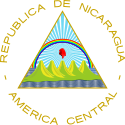 |
|---|
General elections were held in Nicaragua on 4 November 1928 to elect a president, half of the deputies and a third of the senators of the National Congress.
Contents
"The electoral mission had given three months' training, in special schools in each province, to the marine and navy enlisted men who were to be chairmen of most of the 432 local electoral boards. The chairmen of the 13 departmental electoral boards were for the most part officers from the United States Army." [1]
Two minor parties, Conservative Republican and Liberal Republican, requested the National Board of Elections (NBE) the right to appear on the ballot. The NBE unanimously refused both requests. [1]
The large turnout of 88% of those registered resulted in an unequivocal victory for the Liberal Party. More importantly, the defeated Conservatives professed its willingness to abide by this outcome. [2] "Since the Liberal Party had discarded its extreme nationalism and anti-imperialism which it had acquired under José Santos Zelaya, the United States was able to install a Liberal president in 1928 without sacrificing even the least security for its interests in the country." [3]
"Although the National Guard got off to a promising start, the continued rivalry between Nicaragua's traditional political parties ultimately led to its politicization. In the elections of 1928, the Guard seemed to supervise polling effectively, and at the time there were reasons to believe that it could develop into a cohesive and professional policing force. Following his decisive electoral victory, however, José María Moncada Tapia of the Liberal Party worked to convert the institution into a political force of the Liberals." [4]